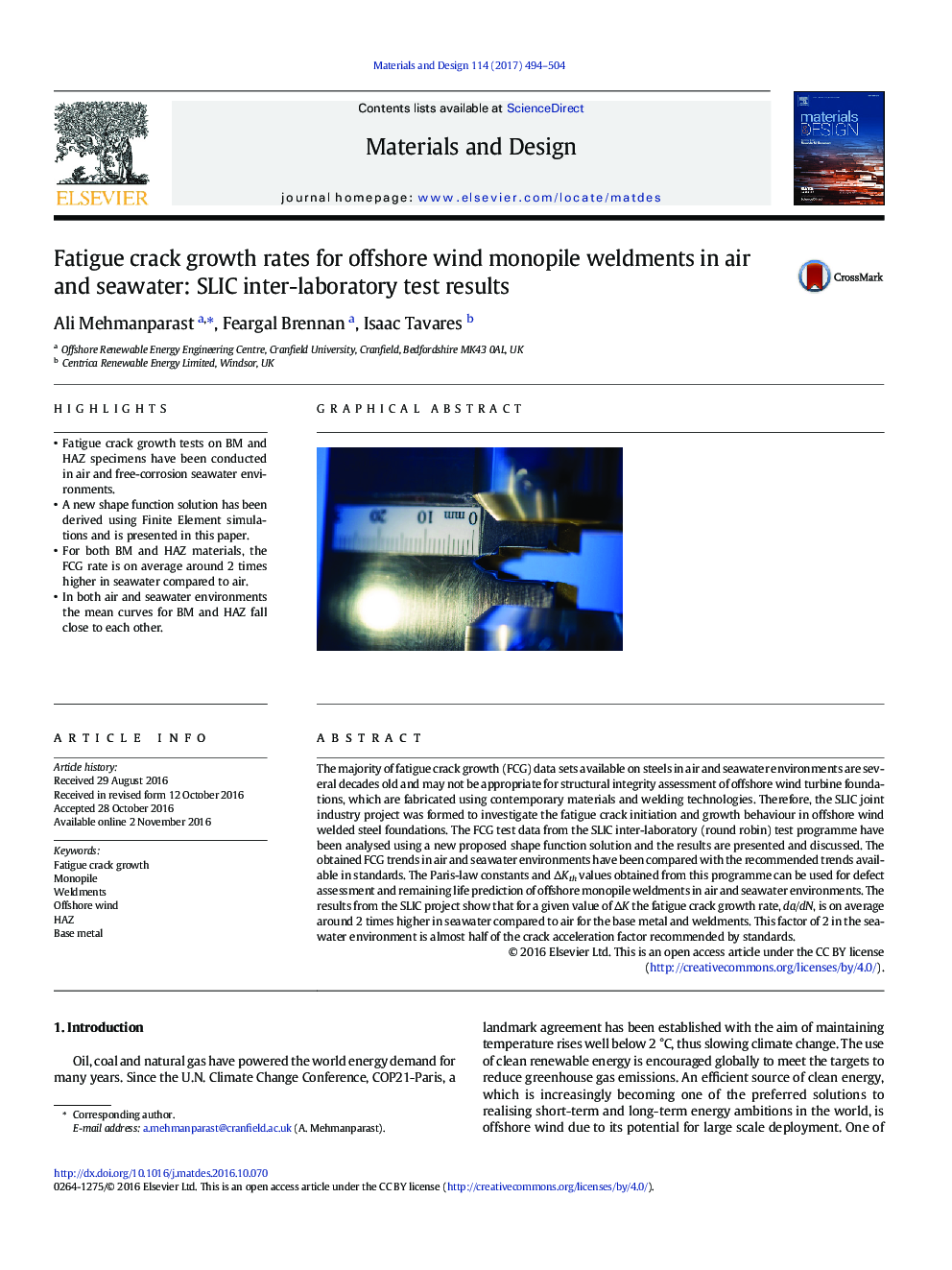| کد مقاله | کد نشریه | سال انتشار | مقاله انگلیسی | نسخه تمام متن |
|---|---|---|---|---|
| 5023993 | 1470268 | 2017 | 11 صفحه PDF | دانلود رایگان |

- Fatigue crack growth tests on BM and HAZ specimens have been conducted in air and free-corrosion seawater environments.
- A new shape function solution has been derived using Finite Element simulations and is presented in this paper.
- For both BM and HAZ materials, the FCG rate is on average around 2 times higher in seawater compared to air.
- In both air and seawater environments the mean curves for BM and HAZ fall close to each other.
The majority of fatigue crack growth (FCG) data sets available on steels in air and seawater environments are several decades old and may not be appropriate for structural integrity assessment of offshore wind turbine foundations, which are fabricated using contemporary materials and welding technologies. Therefore, the SLIC joint industry project was formed to investigate the fatigue crack initiation and growth behaviour in offshore wind welded steel foundations. The FCG test data from the SLIC inter-laboratory (round robin) test programme have been analysed using a new proposed shape function solution and the results are presented and discussed. The obtained FCG trends in air and seawater environments have been compared with the recommended trends available in standards. The Paris-law constants and ÎKth values obtained from this programme can be used for defect assessment and remaining life prediction of offshore monopile weldments in air and seawater environments. The results from the SLIC project show that for a given value of ÎK the fatigue crack growth rate, da/dN, is on average around 2 times higher in seawater compared to air for the base metal and weldments. This factor of 2 in the seawater environment is almost half of the crack acceleration factor recommended by standards.
209
Journal: Materials & Design - Volume 114, 15 January 2017, Pages 494-504